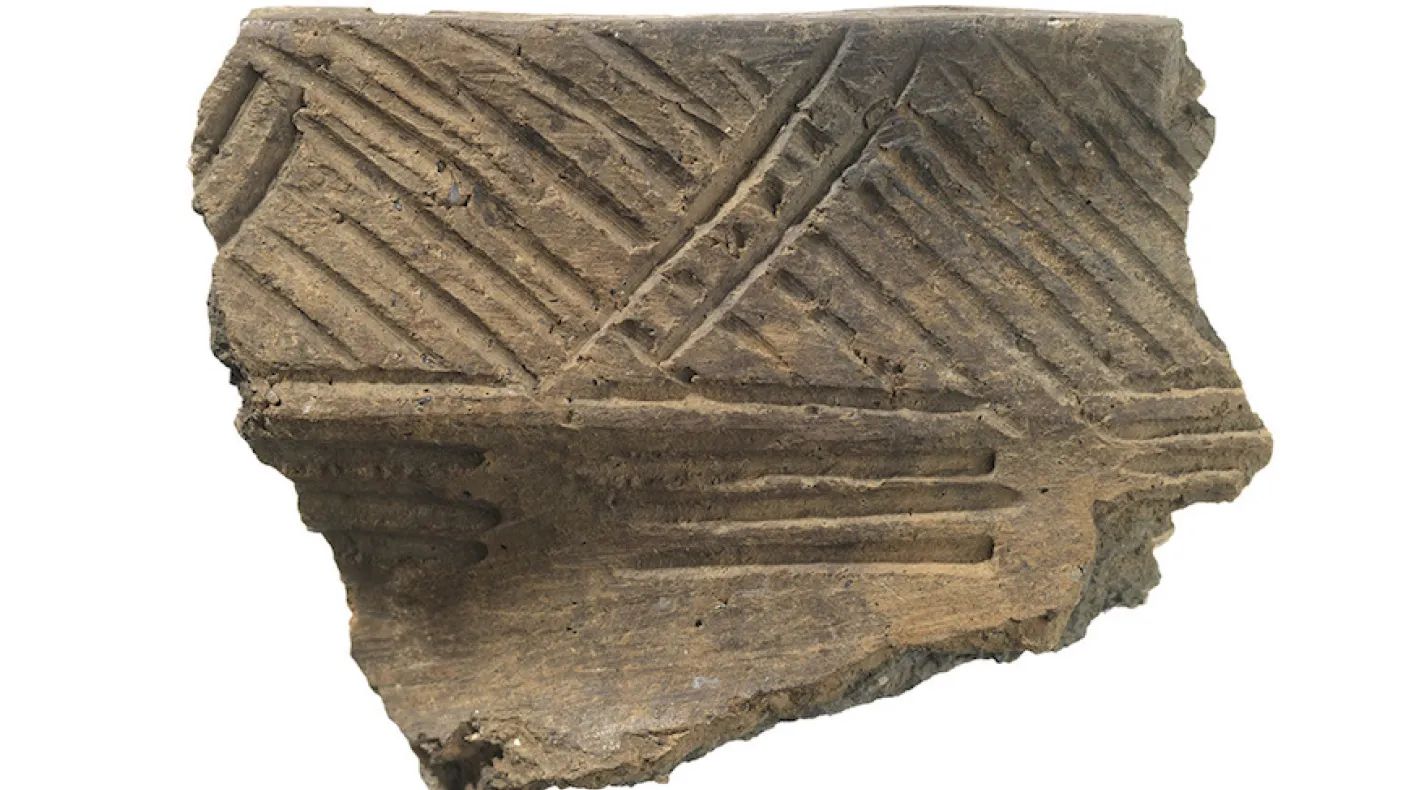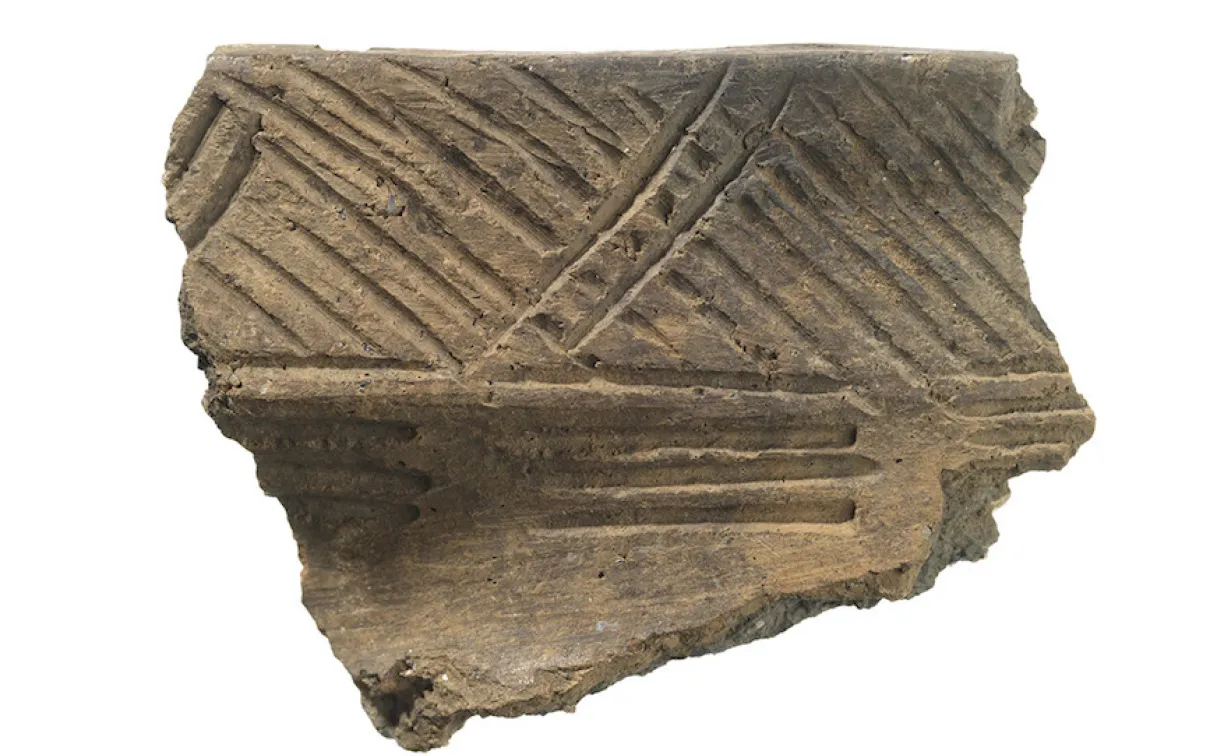The Past in the Present: A Dialogue
Published
Categories
Author
Blog Post
The Past in the Present: A Dialogue
By Catherine Tammaro, Richard Zane Smith, and Craig Cipolla
Nearly a year ago we met together at the Royal Ontario Museum to discuss and handle Wendat pottery. Our meeting led to a small collaborative research and writing project that resulted in an ongoing series of blogs. So far, we’ve discussed Remembering Ancient Ceramic Traditions, Archaeological Approaches to Ceramics, and Wyandot Approaches to Archaeological Ceramics. In this entry, we bring our different perspectives into dialogue with one another to briefly explore the diversity and strength of collaborative projects such as ours. Here we focus specifically on our respective understandings of time, an important consideration for anyone interested in the past.
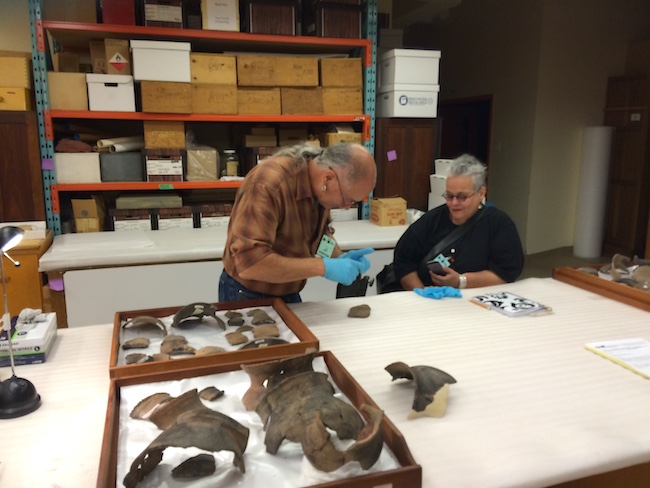
Richard and Catherine examining Wendat ceramics in the ROM’s New World Archaeology collections room.
Catherine: I do not separate past and present around the making of forms and material goods as to me they are part of the continuum which is included in our way of looking at things; our paradigm – we are included in the past and present. A deep cultural connecting place seems to transcend those notions of past and present being separate and that includes the way traditions are handed down from mother to daughter and so on. Of course, this would also include genetic or “blood memories” of making pots and vessels. Eggs are vessels as well! My mother was a potter and I too explored working with clay for a few years. Again, clan and clay have the same root stem in Wendat; we must ask ourselves why this is so. Land-based teachings may explain some of these deeper connections. The art forms we explored were Ancestral art forms and as a young person I drew designs and shaped a pot or two that had a resemblance to some of the works I’ve recently seen. My own experience seems to suggest to me that there is a definite link in expression, which would seem to migrate down through generations (as well as be carried over geographical distances, for various reasons). Why do my early paintings closely resemble designed shapes and forms I see in Wendat pipes and other cultural art forms? What is the push that encourages people to create in this connected way? It moves me deeply to feel that connection and when I open to it, it reveals itself to me. Recently making a “traditional” pot, well, I can’t begin to describe how satisfying and affirming the experience was! I felt the continuum as an experiential re-membering of information already known and newly relearned. As far as the future goes, I’m hoping young ones will be interested in opening their own deeper creative spaces while learning Indigenous ways of knowing.
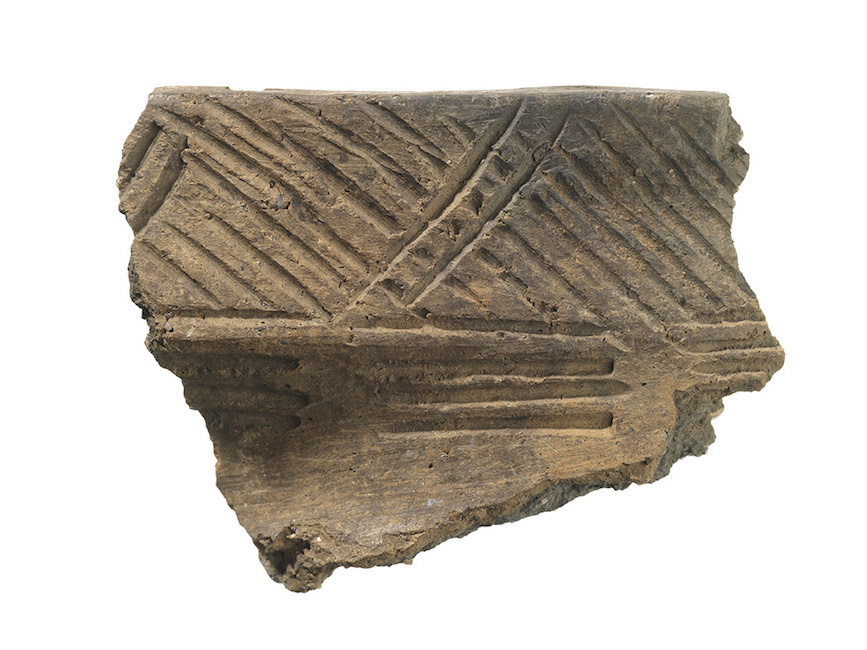
Rim fragment of a seventeenth-century Huron pot. Photograph credit: Brian Boyle, copyright Royal Ontario Museum
Richard: Wendat/Waⁿdat concepts of time and space can be frustrating to linguists and even to present tribal members relearning their own language. I'm not sure I'm confident enough to unravel all the differences except in the broadest terms. When we refer to the Ancestors, we often use the term hatirúnǫ (or hatirúnyǫ) which is also our description of the stars. The stars were not perceived as being anywhere but right there in the sky just as we might say that pine tree is right there next to that hickory. We live in the presence—under the gaze—of our Ancestors. As human beings, we are the living spark where our Ancestors touch the young and the unborn generations. We are the meeting place of Ancestors and youth, we are also the meeting place of sky and earth, of masculine and feminine, the spark between our birth and our death. In some ways, we are our Ancestors and we are also our youth.
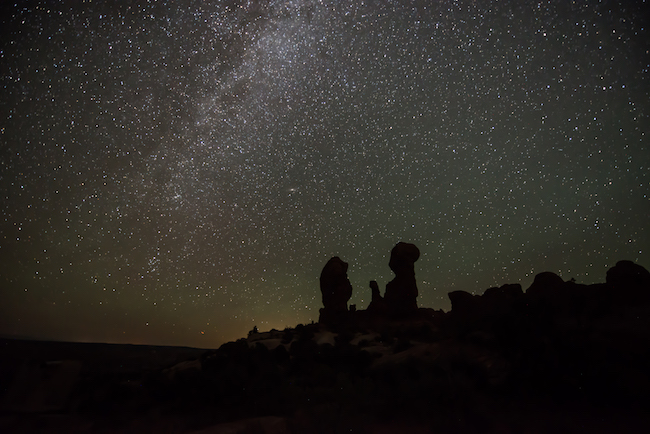
Stars as Ancestors. Photograph by Arches National Park (Milky Way over the Garden of Eden) [CC BY 2.0 (http://creativecommons.org/licenses/by/2.0) or Public domain], via Wikimedia Commons.
As far as the progression of time, it’s circular as in many village agricultural societies that continue to hold cyclical thanks-giving ceremonies throughout a year. A year is divided into moons as seasons, and very likely there were seasons when pottery was created, just as there were seasons for hunting, for planting, and seasons for making fishing nets. Because the pottery tradition phased out during the years after the dispersal much of this knowledge is missing so we want to be careful to keep from getting too mystical about it all or making things up.
Craig: This discussion reminds me of some new directions in archaeological thinking. Per many archaeologists, the things—in this case, the ceramics—that they find, collect, and analyze are representations of the past. In this sense, they use artifacts to help them “get at” something that they can’t directly experience (“the past”). Some new thinkers in archaeology are beginning to question this notion. They see archaeological materials, not as representations of some unobtainable past, but rather as the past that remains in the present. In this new light, the archaeological materials that we hold in ROM’s New World Archaeology collection room are much more than representations. They are the past and the present.
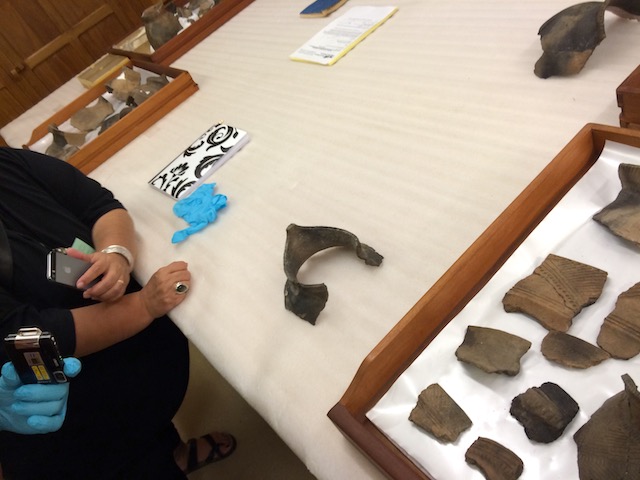
Richard and Catherine discussing a castellated rim for a Wendat pot.
This type of dialogue begins to demonstrate how we can learn from one another through collaboration research. It certainly shows that the three of us have slightly different perspectives on time. For instance, Catherine emphasizes genetic and kin-based connections, Richard emphasizes traditional cultural perspectives, while Craig emphasizes artifacts as connecting points. Having noted these differences, this discussion also shows how these perspectives overlap in important ways (for instance, we all see the past as still present!).
In our next blog entry, we explore our perspectives on the nature of "things," "artifacts," or “material culture.”
